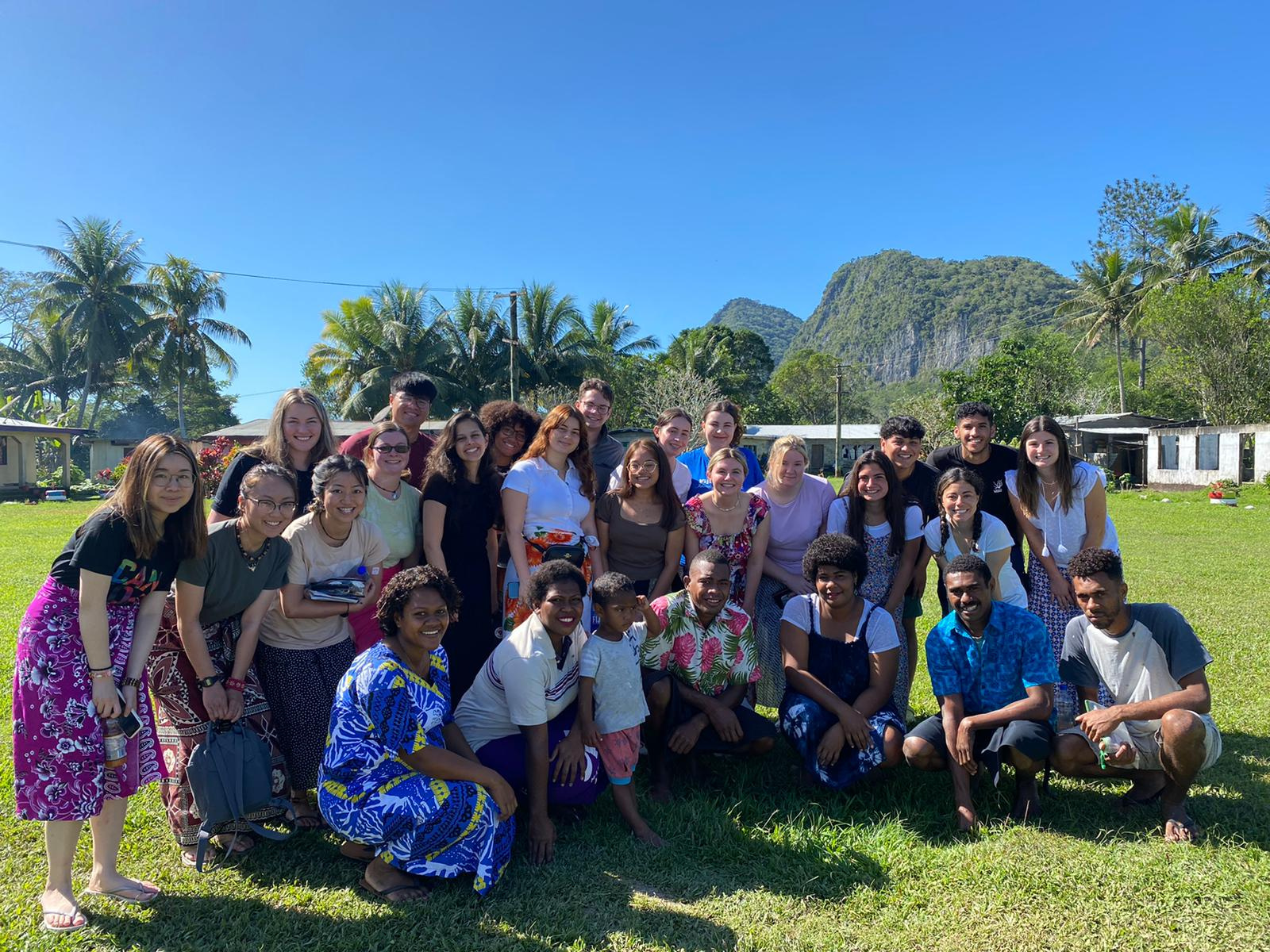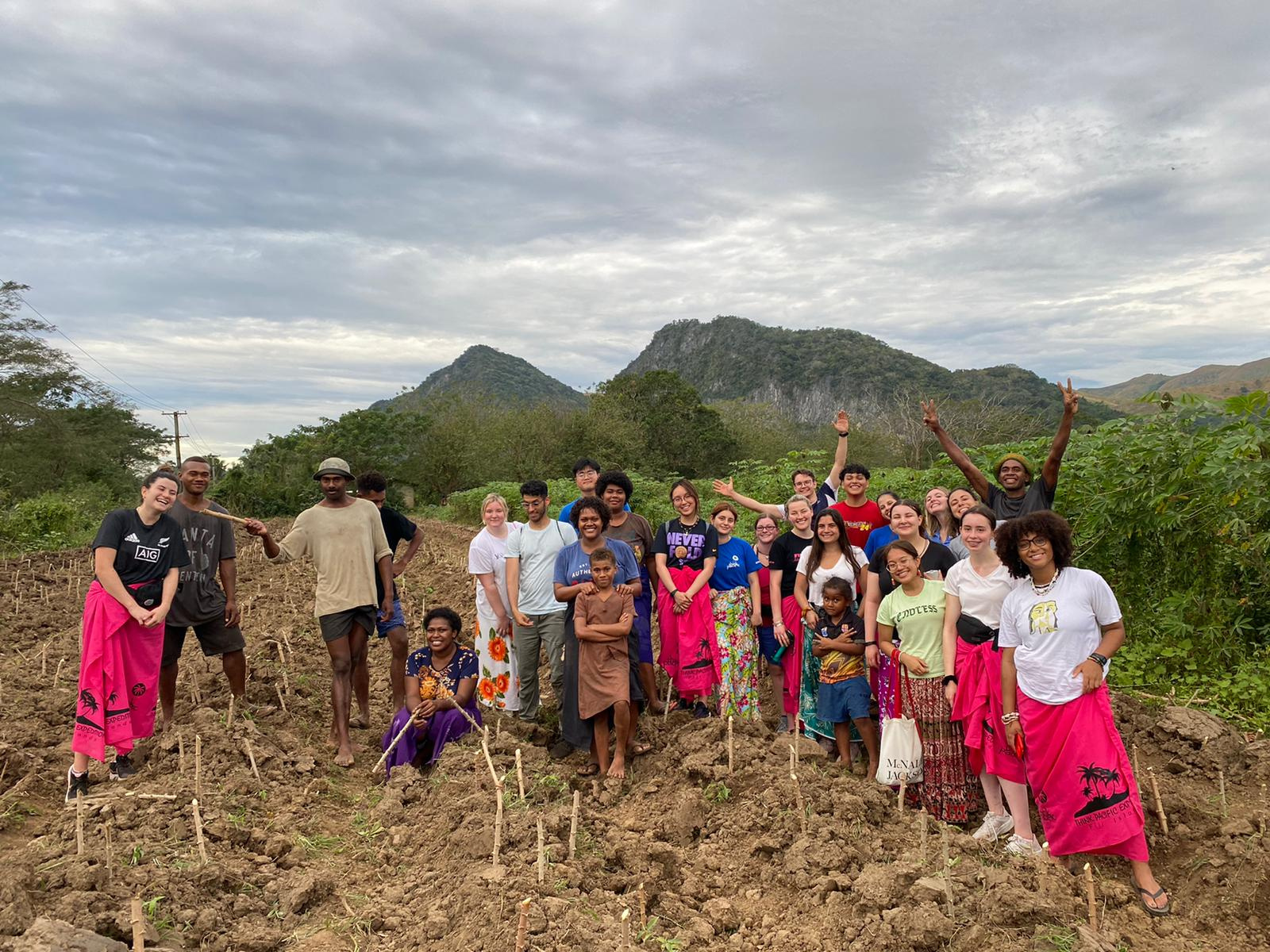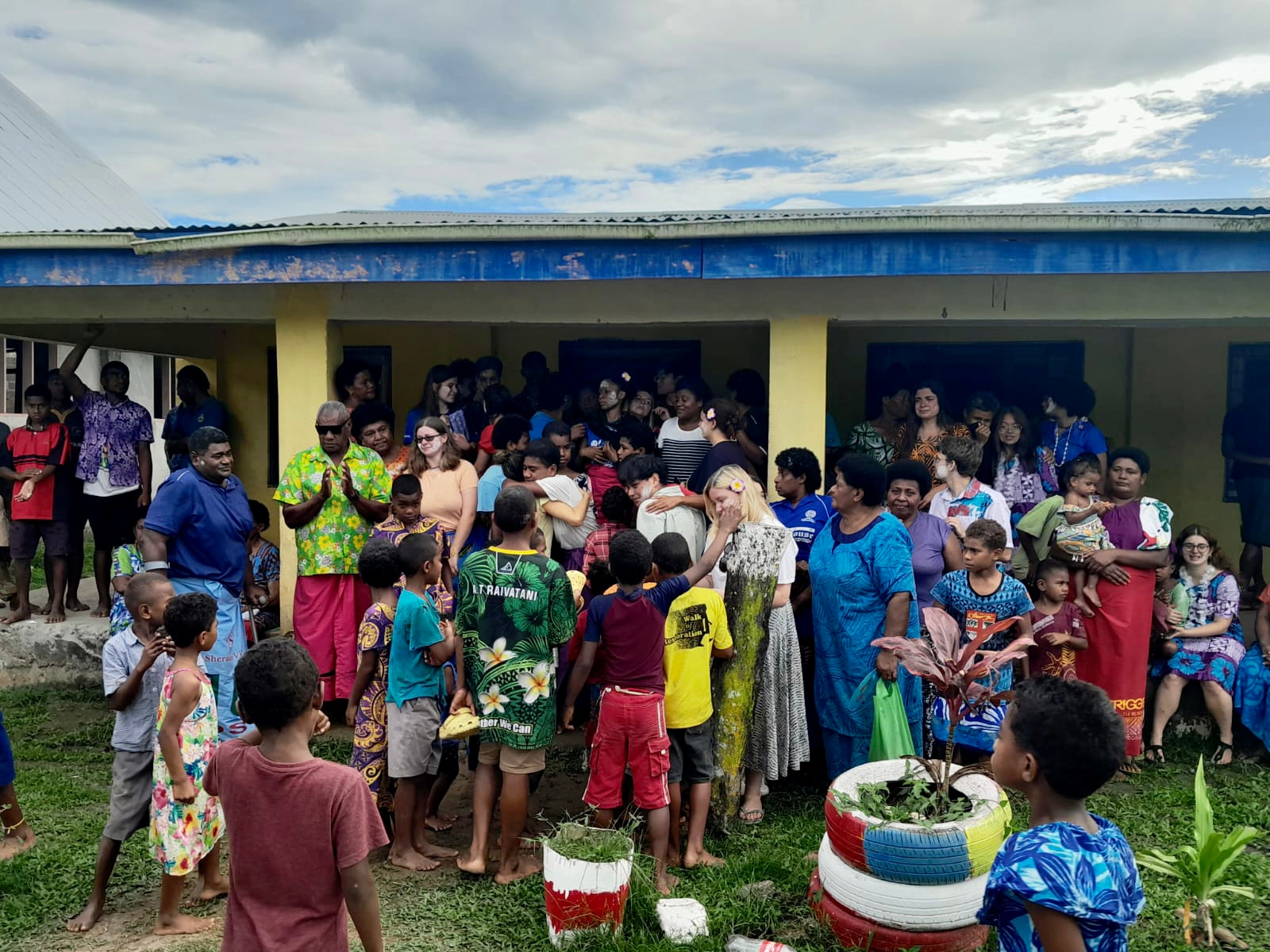LIA Showcase

My team was invited into the Fijian village of Jubairata. We integrated ourselves into the village quickly as we each lived with a local family in their home. In addition to this, we worked with 2 Fijian NGOs during our stay. Here I will briefly discuss what the NGO projects involved, and what I learnt while completing them.

During the first half of the project, we worked with Diabetes Fiji. Their main goals are to empower and support individuals with diabetes and educate the public about the condition – which is the 2nd leading cause of death in Fiji. The project that Diabetes Fiji ran involved daily workshops where the volunteers and the youth of the village (those aged 18-35) were educated on topics associated with diabetes, in preparation for a health clinic which we would help to run on the last day of the project. Part of my role as a volunteer was to attend the workshops and be active in discussions with the youth to increase engagement.
In the workshops, the discussions I had with the youth were some of the most fulfilling conversations I had while in the village; however, sometimes group work was difficult to navigate. When having group discussions about topics that I understood well, but others did not, there were times where I had to choose between completing a task successfully or ensuring team members had a good understanding. For example, in a time restricted task where we had to name foods with a high glycemic index (GI), I chose to sit back and let the youth discuss their thoughts in Fijian, as they figured out how to describe what GI meant in their language. This meant we did not write down many ideas for the task, but it did mean that now the youth can explain to others about what GI is – a much greater success on their part. This balance between completing different goals was something that I struggled to navigate as the projects continued, but I learnt that the tasks the NGOs set should not dominate over what the youth of the village feel they need to discuss, for their improved understanding or wellbeing.

In the second half of the project, we worked with Youth Champs 4 Mental Health (YC4MH), one of the few Fijian mental health charities. The aim of their project was to start the conversation with the youth about mental health – something most had never discussed before. Again, the project used a daily workshop format, but this time to discuss mental health and mental illness, their history in Fiji, suicide, and self-care.
I expressed interest to the charity partners about being more involved with the workshop discussing suicide, and as a result I was able to help them run the session, incorporating some of my own activities into the workshop. On the day of the session, I was unwell and so couldn’t project my voice to everyone, so I suggested to my team that I should take on a roll of working my way around smaller groups to give them specific guidance in their tasks, rather than standing up front and giving instructions. This method of leadership was particularly efficient as I was able to assist people on an individual level and therefore make a more meaningful impact as a leader – especially since we the groups were discussing very sensitive topics. Not only did these more intimate conversations allow those attending the session gain a better understanding of the topics we were discussing, but I also gained an increased understanding of Fijian culture which allowed me to improve my communication with the group going forward. Throughout our stay in Jubairata, this was a method of leadership that many of the volunteers adopted, and one which I will use going forward. Leaders can make more meaningful impacts when on the same level – physically and socially – as those they are leading.

There are many more lessons that I learnt, both about leadership and myself, that I cannot fit into such a short blog post. What I learnt during the projects really is just the tip of the iceberg. The village was a wonderful place to live and the love and generosity I was shown by the whole community while living there was more than I could ever imagine. I was told by my host family that Jubairata is now my second home, and it certainly feels that way. I hope to return to Jubairata soon.

Please sign in
If you are a registered user on Laidlaw Scholars Network, please sign in